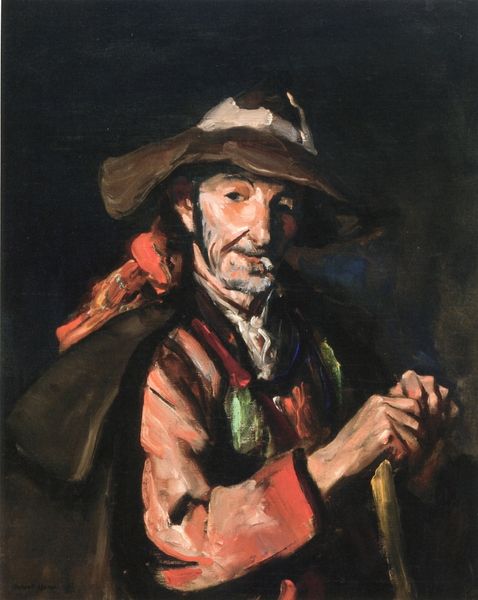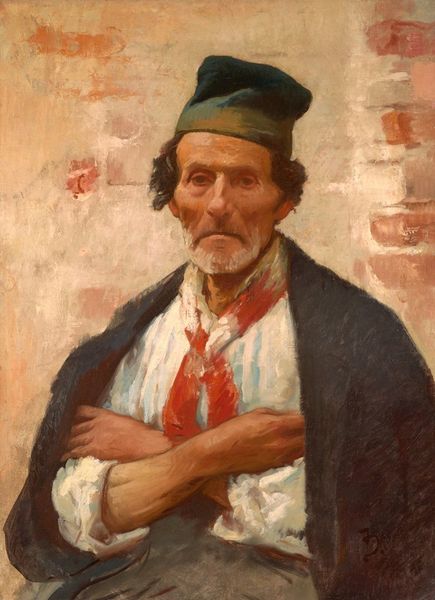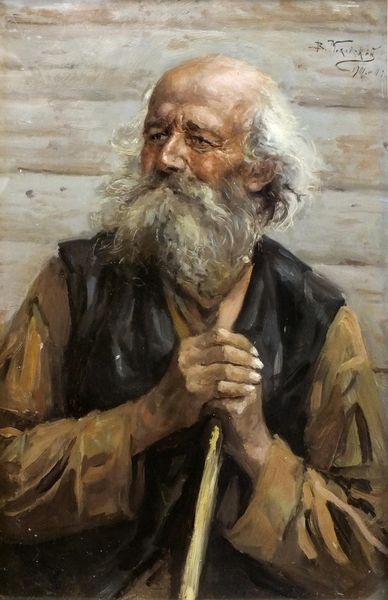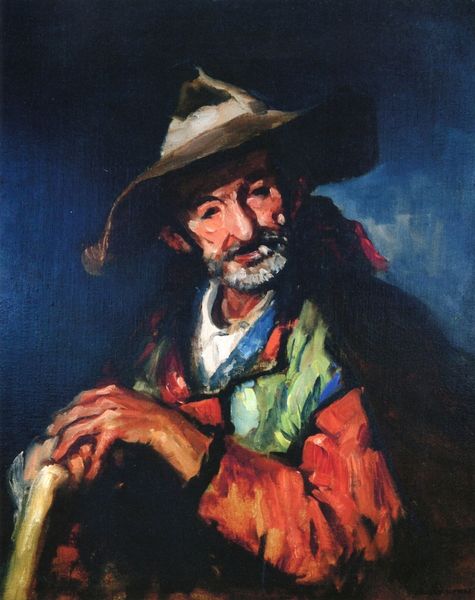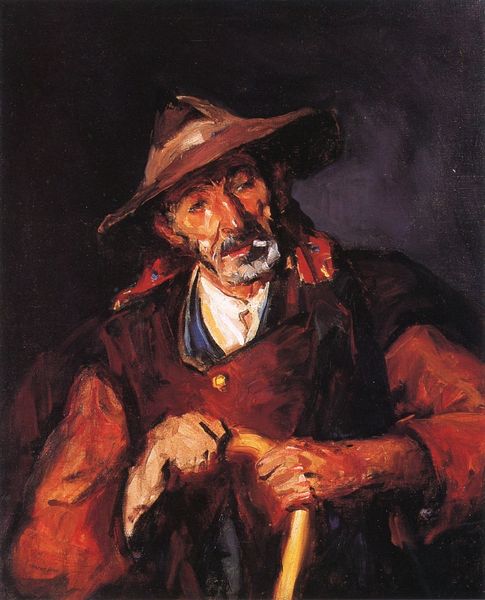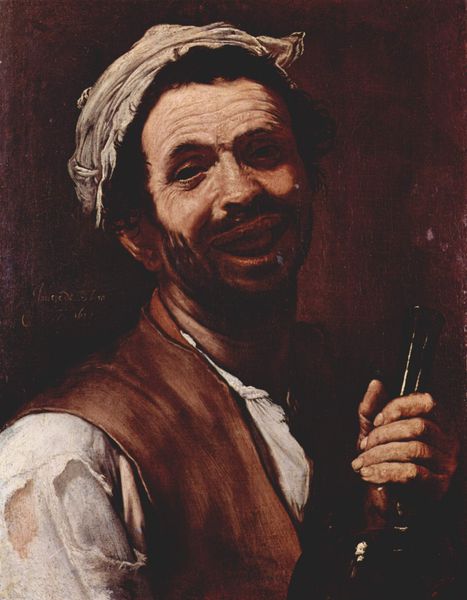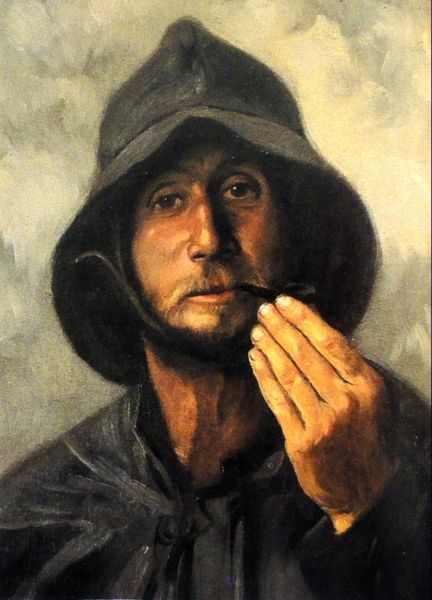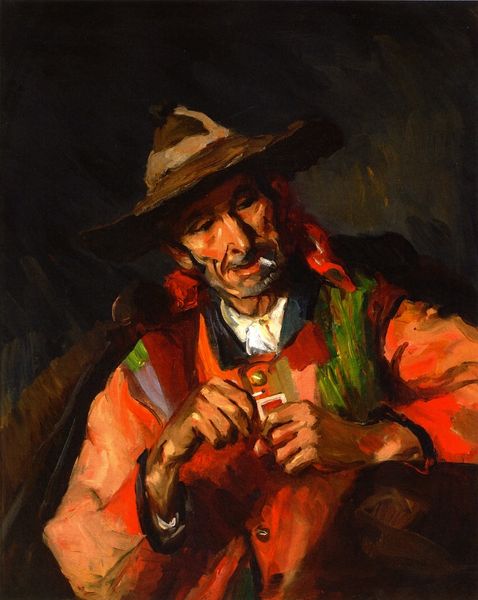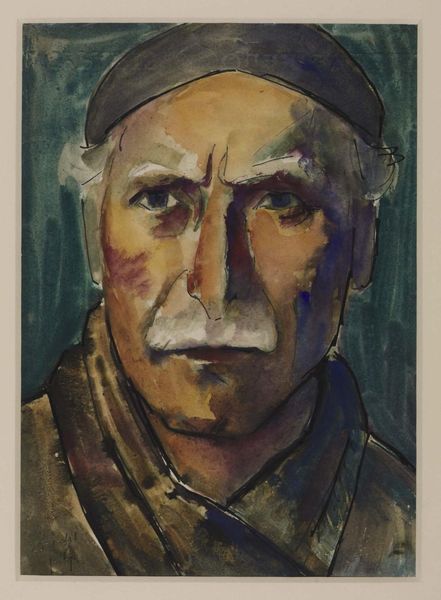
oil-paint
#
portrait
#
oil-paint
#
oil painting
#
genre-painting
#
portrait art
#
realism
Copyright: Public domain
Curator: Up next we have "Portrait of a Peasant" by Ipolit Strambu. What are your initial thoughts on this artwork? Editor: Stark. Immediately, I’m drawn to the man’s gaze – intense, direct. There's something unyielding in the way he meets the viewer. It speaks to the enduring spirit of rural communities perhaps, but there's also something vaguely haunting. Curator: I see that intensity. The painting feels grounded in a reality beyond the surface. Notice how Strambu captures the rugged textures – the weathered skin, the coarse fabric of his clothing. Those details speak volumes. He's portrayed in muted earth tones, reflecting the connection to the soil, and a timeless quality. Editor: Absolutely. And look at how that color palette informs the context. A piece like this, presented presumably by someone other than the subject – what socio-political statement might the artist be making? Is it about giving a voice to the voiceless? A commentary on class, or social hierarchies? Curator: Perhaps. Symbols certainly operate here in several layers. The peasant, throughout art history, often becomes the symbol of collective memory and tradition, deeply embedded in the national narrative and serving as a signifier of cultural endurance. But in the details of this particular painting, don't you detect a sort of universal human struggle represented in this peasant? Editor: I agree. Strambu’s ‘Peasant’ isn’t merely a relic of history; he embodies the resilience against various forces—political, economic, and social. It makes me question who gets to narrate whose story and for what purpose. Curator: The portrait reminds me of the power that resides in those stories. In looking at this figure, one is inevitably confronted with questions of identity and memory. Perhaps that direct gaze is an invitation for the viewer to recognize the humanity we all share. Editor: Yes, Strambu invites reflection. Through realism he urges an ethical gaze. I'm left wondering about the actual conditions of those represented in such genre-painting pieces, not just the ideal. Curator: It gives you much to think about in our contemporary context too. Editor: Exactly.
Comments
No comments
Be the first to comment and join the conversation on the ultimate creative platform.

